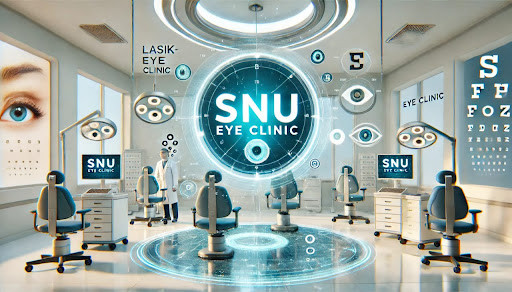In the modern age, screens are everywhere. Whether you’re working from a computer, texting on a smartphone, or streaming your favorite shows, digital screens are an unavoidable part of daily life. snuseoulglobal.com While these technologies offer tremendous benefits, they also present new challenges—especially for your eyes. Prolonged screen time can lead to eye strain, dryness, blurred vision, and even long-term issues if not managed properly. Fortunately, there are effective strategies to maintain your eye health despite the digital overload.

Understanding Digital Eye Strain
Also known as computer vision syndrome, digital eye strain refers to a group of eye and vision-related problems that result from prolonged use of digital devices. Symptoms include:
- Eye fatigue or discomfort
- Dry or irritated eyes
- Blurred or double vision
- Headaches
- Neck and shoulder pain
These symptoms are often the result of poor lighting, improper viewing distances, glare on the screen, and uncorrected vision problems.
The 20-20-20 Rule: A Simple Habit That Works
One of the easiest and most effective ways to reduce digital eye strain is by practicing the 20-20-20 rule. Every 20 minutes, take a 20-second break and look at something 20 feet away. This quick exercise relaxes the focusing muscles of the eyes and reduces fatigue.
Optimize Your Workspace
Creating an eye-friendly workspace can significantly reduce the negative effects of screen exposure. Here are a few tips:
1. Adjust Screen Position
Position your monitor so the center is about 15–20 degrees below eye level and 20–28 inches from your face. This reduces strain on both the eyes and neck.
2. Control Lighting
Avoid glare from windows or overhead lights by using blinds, curtains, or anti-glare screen filters. Ideally, your screen should be neither much brighter nor much darker than your surrounding environment.
3. Use Proper Ergonomics
Make sure your chair and desk are at the right height to promote good posture. Poor posture can lead to muscle tension that affects your eye comfort.
Blink More Often
When you’re focused on a screen, your blink rate tends to drop, which can lead to dry eyes. Try to consciously blink more often or even take short breaks to close your eyes. Using artificial tears or a humidifier can also help maintain moisture in your eyes.
Adjust Display Settings
Customizing your display settings can ease the strain on your eyes:
- Brightness: Match your screen brightness to the ambient light around you.
- Text Size and Contrast: Make sure the text is large enough to read easily.
- Color Temperature: Use warmer colors in low-light environments to reduce blue light exposure.
- Blue Light Filters: Most devices now include “night mode” or blue light reduction features. These can reduce potential damage to the retina and may also improve sleep quality.
Wear the Right Eyewear
If you wear glasses, make sure your prescription is up to date. Consider lenses specifically designed for screen use—computer glasses—which often have an anti-reflective coating and sometimes a slight magnification to reduce eye strain.
You can also opt for lenses with blue light blocking features. While the science is still evolving on how much protection they provide, many users report less fatigue when using them.
Take Regular Eye Exams
Even if you don’t have vision problems, regular eye exams are essential. Your optometrist can detect early signs of digital eye strain and recommend strategies or eyewear tailored to your needs. Children and teenagers, in particular, should be monitored closely due to their increasing exposure to screens during both school and leisure time.
Get Enough Sleep
Sleep plays a crucial role in overall health, including your eye health. Excessive screen time, especially before bed, can interfere with melatonin production and disrupt your sleep cycle. Poor sleep can, in turn, lead to red, puffy, or irritated eyes the next day. Try to avoid screens at least one hour before bedtime, and establish a calming nighttime routine that supports restful sleep.
Limit Screen Time When Possible
While it’s unrealistic to eliminate screens entirely, taking time away from devices when possible is beneficial. Encourage activities that don’t involve screens, such as walking outdoors, reading a print book, or engaging in face-to-face conversations.
If your work involves extended screen time, consider batching tasks that require intense focus and scheduling breaks in between. Digital detox days or device-free hours can help reset your visual system and restore comfort.
Eat for Eye Health
Good nutrition supports good vision. Include eye-friendly nutrients in your diet, such as:
- Vitamin A (carrots, sweet potatoes, spinach)
- Lutein and Zeaxanthin (kale, eggs, corn)
- Omega-3 fatty acids (salmon, flaxseed, walnuts)
- Vitamin C and E (citrus fruits, almonds, sunflower seeds)
These nutrients help protect against age-related macular degeneration and other eye conditions.
Final Thoughts
Digital devices are here to stay, but that doesn’t mean your eyes have to suffer. With simple adjustments to your environment, habits, and lifestyle, you can significantly reduce eye strain and support long-term eye health. Remember to follow the 20-20-20 rule, optimize your screen settings, blink more often, and take regular breaks. And don’t underestimate the power of proper nutrition and regular eye exams.
In a digital world, your eyes are your most important interface—take care of them.